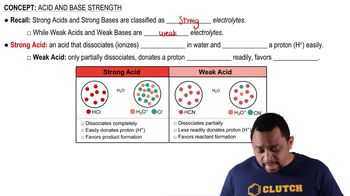Suppose you have a sample of benzoic acid dissolved in water.
c. Finally, assume that aqueous HCl is added to the solution from (b) until pH 2 is reached. Draw the structure of the major organic species present.
 Verified step by step guidance
Verified step by step guidance Verified video answer for a similar problem:
Verified video answer for a similar problem:



 1:9m
1:9mMaster Acid-Base Reactions Concept 1 with a bite sized video explanation from Jules
Start learning